An Interview With the PlagScan Team: Raising Awareness about Plagiarism
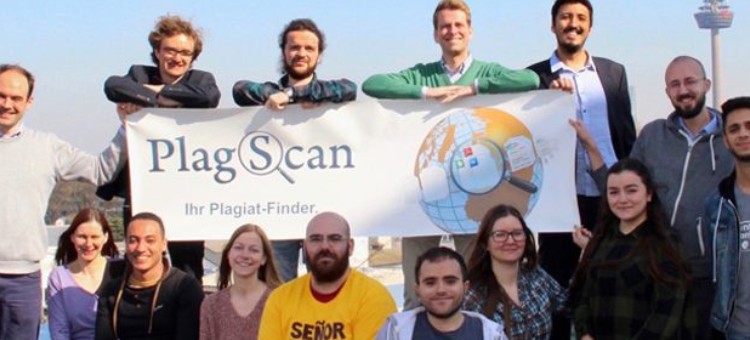
In this interview, Enago Academy had the opportunity to speak with the PlagScan team over the rising cases of plagiarism in scholarly research. PlagScan plagiarism detection software is a tool that is used worldwide by academic institutions and businesses with an aim to identify plagiarism and also educate students on the correct citation of sources and copyright infringement in academic research.
What are your thoughts on the increased occurrence of plagiarism in scholarly research in the recent years?
Plagiarism is a serious problem, especially in education. Unfortunately, many neglect the importance and seriousness of the issue until it is too late—we have come across several plagiarism-related scandals in the media this year. A rapid growth of technology and digitization has made reusing content easier. Fortunately, tools to detect plagiarism have evolved as well. PlagScan tool that raises awareness about plagiarism among its users and the general public by providing digital content around the topic of plagiarism and conducting events to talk about the issue. We are happy to work together with Enago on a common goal of ensuring academic integrity and preventing intellectual theft.
How does one deal with plagiarism once it is detected by the PlagScan software?
How users continue to process the detected plagiarism depends on the person conducting the investigation and the purpose of the investigation. For instance, we have students checking their work prior to submitting it to their instructor so this allows them to learn by example where they did not cite properly and where to make modifications. On the other hand, teachers using the software set their own bar in terms of tolerance and decide individually how they want to proceed with the findings. Their options would be to drop the grade, fail the assignment, or to allow resubmissions.
Since its inception in 2009, what have been some of the major milestones for the service? Also, are there different forms of this service?
PlagScan started out as a free online service in 2009, after which we improved our service by adding databases and accommodating single users. In 2011, we added an administration panel for organizations, schools, and universities that had started to use the service. This panel allows organizations to access extended features such as sub-users, departments, API-access, as well as specific billing settings. Since 2013, PlagScan plagiarism software has been integrated into a variety of systems through a comprehensive API (Application Programming Interface). We also started operating the software in four languages—English, German, Spanish, and French. In 2015, we surpassed 10,000 daily users on our website and achieved more than 1000 organizational subscriptions to our service. In 2017, we plan to launch our redesigned website, in which we incorporate the learnings in the last few years. We also plan to effectively educate and inform the general population about plagiarism prevention.
Customer feedback and experience have enabled us to tailor the most effective solutions and innovative useful features. We have started to focus our main services towards educational institutions to ensure academic integrity and to businesses that value unique content creation and copyright protection. Furthermore, we offer the option to install an “on-premise” solution, which guarantees absolute data security.
Compared to its competitors, how is the PlagScan software different and what are the main benefits it offers its target audience?
The benefits PlagScan tool offers are threefold:
Fair pricing: We offer the best price to performance ratio in the market and provide a free trial to anyone interested in our service, prior to purchase. Users can pick from different packages, varying from a $4.99 one-time-usage up to a yearly license for universities or enterprises.
Precision: Anything that is freely accessible on the internet and indexed by Microsoft Bing is the basis of our plagiarism search, as well as deeply crawled scientific content (20,000+ open access journals). Depending on the account data settings, users can also include and provide documents to be part of the internal database of the PlagScan tool. This PlagScan software database consists of documents voluntarily provided by our customers and consenting publishers.
Data security: Data security and copyright law are a top priority for us. The user alone has full control over the uploaded documents, which we will never share with third parties or upload elsewhere. If the user deletes a document, it disappears completely from our servers. Besides that, the search queries used for the plagiarism analysis do not leave traces, which could lead to text reproduction.
Could you provide further information about the two-step search algorithm that is incorporated into PlagScan plagiarism software?
PlagScan software uses its own indexing tool built on Apache Solr. The web documents for plagiarism detection are taken from Bing Search, by Microsoft. All sources are thoroughly scanned for similarities and consecutive word matches of three, including reordered and synonym-containing matches that will be marked down for possible plagiarism.
What are the different forms of plagiarism that are identified by PlagScan tool?
PlagScan software covers the most common forms of plagiarism: Direct plagiarism (word-for-word transcription), Self-plagiarism (comparing the work of a student against past submissions), Collusion (copying fellow students), incorrect citations and much more.
What has been your experience with journals and publishers in general? Do they have any misconception with respect to such plagiarism detection software solutions?
Publishers are very concerned about the originality and copyright of their content since it is core to their business. While this justifies the use of technology like ours, it is at the same time difficult to convince them to allow a service like the PlagScan plagiarism software to index their content. We are going to great lengths to provide the publishers with a system, where they can profit from providing access to third parties to detect plagiarism within their text.
Do you have any plagiarism detection tips for publishers?
The best solution we recommend to publishers is to check their work with the PlagScan software before publishing. The right approach to avoid plagiarism is proper citation and source attribution.
What is the success of using PlagScan’s service and the impact it has had, especially in markets like Asia?
The PlagScan tool continues to experience growth in all continents of the world. That’s the beauty of providing a SaaS (Software as a Service) product. With clients outside Europe and the United States, where we have local representation, it is often advantageous to work with local distribution partners. Our algorithm works with any language (e.g. English, Spanish, Arabic, Russian, etc.) with the only exception of syllable-based languages (Chinese, Japanese, Korean). In countries with syllable-based languages, international schools teaching primarily in English still prefer to opt for the PlagScan software.
Can you share some PlagScan-related vital statistics that our readers might benefit from?
Even though we haven’t conducted any in-house statistics yet, various external studies and research data show the significance of plagiarism in academia. According to a 12-year study on multiple U.S. universities by the International Center for Academic Integrity, nearly 70 percent of undergraduate students admitted to have knowingly cheated on an exam or assignment. More than 40 percent of graduate students admitted to academic misconduct as well. Such studies should provoke some thoughts on the current evaluation methods in academia.
How is the PlagScan plagiarism helping the education community, namely instructors and students? What are some of the initiatives that have been undertaken by PlagScan to educate academic researchers about plagiarism?
The time of instructors is limited and valuable at the same time. Teachers are the ones responsible for helping students succeed. In order to do so, they spend time preparing courses, interacting with students, evaluating exams, and giving important feedback. In terms of evaluation, it takes a significant amount of time and tremendous concentration to read hundreds of pages. Evaluating content is one element, finding plagiarism is another. With the PlagScan tool, teachers can save a lot of time on plagiarism detection and focus on content evaluation and providing feedback. Students can run their papers through the PlagScan software prior to submitting them. If the software indicates plagiarism, students then get the chance to learn from their mistakes and rework their assignments. This pedagogical “self-checking” approach of learning has been proven to be successful by many researchers. Eventually, self-checking ensures that the final submission is free from plagiarism and closer to the student’s desired grade.
PlagScan is also the founder of www.plagiathek.de, an informative plagiarism-related resource for German readers which is being used by students and academics for various purposes. We plan to provide this website in multiple languages in the near future.
What are the primary areas of focus this year for PlagScan?
Our main focus this year will be the enhancement of our API integrations to enable wider usability of the PlagScan software. We also plan to extend the number of functionalities for existing users and organizations. Further information can be found in our recent blog post.
What are the future plans in terms of collaborations with various organizations and feature enhancements for the PlagScan software?
We are constantly looking for new collaborations with publishers and ministries to find ways to further improve the number and quality of sources for plagiarism search. These negotiations take a considerable amount of time and will be an ongoing endeavor in 2017. To help students become more productive and to foster creative and independent thinking, plagiarism is just one piece of the puzzle. We are happy to unify functionalities like grammar checking, literature research & bibliography management, and course management & assessment along with plagiarism checking. In 2017 and beyond, integration of our top-notch plagiarism detecting tool with all of these features will be a major focus
With respect to the recent collaboration with Enago, how will PlagScan plagiarism software benefit authors who use Enago’s services?
PlagScan as well as Enago strive to ensure academic integrity. We are happy to collaborate with Enago in order to achieve the same goal in synergy. Authors can expect precise and detailed reports that are generated instantly. Additionally, PlagScan’s support team is happy to assist users anytime. Authors will benefit from an improved quality of work, which will be in line with citation rules and the prevention of copyright infringement.
It was a great pleasure to talk to the PlagScan team. We sincerely thank them for taking the time to be a part of this interview and also wish them all the very best!
(This interview is a part of our interview series of Connecting Scholarly Publishing Experts and Researchers.)
We would like our readers to know about Enago’s plagiarism detection software. It is a comprehensive tool designed to help researchers, academics, and writers ensure the originality and integrity of their work.
Enagos plagiarism software scans documents against a vast database of published content, online resources, and proprietary materials to identify potential matches and similarities. Leveraging advanced algorithms and user-friendly interface it provides detailed similarity reports, highlighting problematic areas and offering suggestions for improvement. This ensures compliance with ethical publishing standards and reduces the risk of unintentional plagiarism.
Whether for manuscripts, theses, or journal articles, Enago’s plagiarism software supports users in producing high-quality, authentic content while safeguarding their reputation in the academic and professional community.





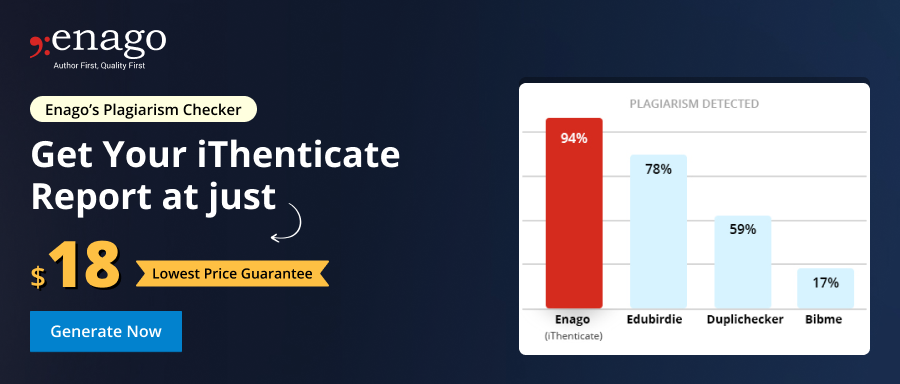
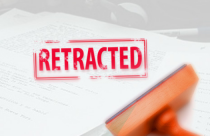

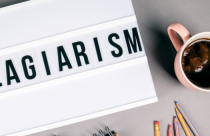
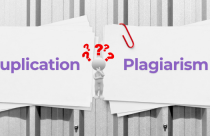

It’s really great! I like this resource.